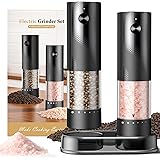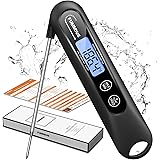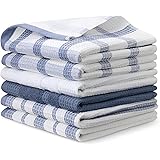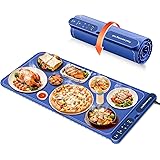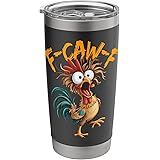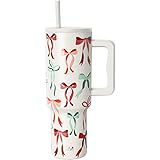Unburnable Truth: Are Fireplace Inserts Safe As They Claim?

Owala FreeSip Insulated Stainless Steel Water Bottle with Straw, BPA-Free Sports Water Bottle, Great for Travel, 24 Oz, Denim
$29.99 (as of November 11, 2025 17:27 GMT +00:00 - More infoProduct prices and availability are accurate as of the date/time indicated and are subject to change. Any price and availability information displayed on [relevant Amazon Site(s), as applicable] at the time of purchase will apply to the purchase of this product.)STANLEY Quencher H2.0 Tumbler with Handle and Straw 40 oz | Flowstate 3-Position Lid | Cup Holder Compatible for Travel | Insulated Stainless Steel Cup | BPA-Free | Plum
$26.55 (as of November 11, 2025 17:27 GMT +00:00 - More infoProduct prices and availability are accurate as of the date/time indicated and are subject to change. Any price and availability information displayed on [relevant Amazon Site(s), as applicable] at the time of purchase will apply to the purchase of this product.)Rubbermaid Brilliance Food Storage Containers BPA Free Airtight Lids Ideal for Lunch Meal Prep & Leftovers Set of 5 (3.2 Cup)
$27.99 (as of November 11, 2025 17:27 GMT +00:00 - More infoProduct prices and availability are accurate as of the date/time indicated and are subject to change. Any price and availability information displayed on [relevant Amazon Site(s), as applicable] at the time of purchase will apply to the purchase of this product.)Etekcity Food Kitchen Scale, Digital Grams and Ounces for Weight Loss, Baking, Cooking, Keto and Meal Prep, LCD Display, Medium, 304 Stainless Steel
$13.99 (as of November 11, 2025 17:27 GMT +00:00 - More infoProduct prices and availability are accurate as of the date/time indicated and are subject to change. Any price and availability information displayed on [relevant Amazon Site(s), as applicable] at the time of purchase will apply to the purchase of this product.)Alpha Grillers Meat Thermometer Digital - Instant Read Food Thermometer for Cooking and Grilling Stocking Stuffers for Men Christmas Gifts for Men
$13.58 (as of November 11, 2025 17:27 GMT +00:00 - More infoProduct prices and availability are accurate as of the date/time indicated and are subject to change. Any price and availability information displayed on [relevant Amazon Site(s), as applicable] at the time of purchase will apply to the purchase of this product.)Crock-Pot 7 Quart Oval Manual Slow Cooker, Stainless Steel (SCV700-S-BR), Versatile Cookware for Large Families or Entertaining
$47.99 (as of November 11, 2025 17:27 GMT +00:00 - More infoProduct prices and availability are accurate as of the date/time indicated and are subject to change. Any price and availability information displayed on [relevant Amazon Site(s), as applicable] at the time of purchase will apply to the purchase of this product.)KitchenAid Classic Multifunction Can Opener and Bottle Opener Easy to Use, Razor Sharp Stainless Steel Cutting Wheel, Soft Ergonomic Handles, Black
$14.35 (as of November 11, 2025 17:27 GMT +00:00 - More infoProduct prices and availability are accurate as of the date/time indicated and are subject to change. Any price and availability information displayed on [relevant Amazon Site(s), as applicable] at the time of purchase will apply to the purchase of this product.)Owala SmoothSip Slider Insulated Stainless Steel Coffee Tumbler, Reusable Iced Coffee Cup, Hot Coffee Travel Mug, BPA Free 12 oz, Vanilla Bean
$24.99 (as of November 11, 2025 17:27 GMT +00:00 - More infoProduct prices and availability are accurate as of the date/time indicated and are subject to change. Any price and availability information displayed on [relevant Amazon Site(s), as applicable] at the time of purchase will apply to the purchase of this product.)HydroJug Traveler - 32 oz Water Bottle with Handle & Flip Straw - Fits in Cup Holder, Leak Resistant Tumbler-Reusable Insulated Stainless Steel & Rubber Base - Gifts for Women & Men, Pink Sand
$34.99 (as of November 11, 2025 17:27 GMT +00:00 - More infoProduct prices and availability are accurate as of the date/time indicated and are subject to change. Any price and availability information displayed on [relevant Amazon Site(s), as applicable] at the time of purchase will apply to the purchase of this product.)ThermoPro TP19H Digital Meat Thermometer for Cooking with Ambidextrous Backlit and Motion Sensing Kitchen Cooking Food Thermometer for BBQ Grill Smoker Oil Fry Candy Instant Read Thermometer
$14.99 (as of November 11, 2025 17:27 GMT +00:00 - More infoProduct prices and availability are accurate as of the date/time indicated and are subject to change. Any price and availability information displayed on [relevant Amazon Site(s), as applicable] at the time of purchase will apply to the purchase of this product.)For many homeowners, the crackle of a wood-burning fireplace is the epitome of comfort. Yet, lingering concerns about safety, efficiency, and air quality often temper this cozy image. If you find yourself weighing the allure of a warm fire against the potential risks, you’ve likely encountered a popular solution: the fireplace insert. This naturally leads to a critical and common question: Are fireplace inserts safe?
The direct answer is that professionally installed and properly maintained fireplace inserts are a significantly safer alternative to traditional open masonry fireplaces. They are engineered with safety as a core principle, incorporating features that directly address the most common hazards associated with conventional fireplaces. However, the complete picture of fireplace insert safety is more nuanced, hinging on factors like the type of fuel, the quality of installation, and ongoing maintenance.
This definitive guide will dissect every aspect of fireplace insert safety. We will explore the engineering that makes them a secure choice, debunk prevalent myths, and provide a detailed comparison against traditional fireplaces. You will learn about the specific safety technologies in gas, wood, and pellet inserts, and receive a clear, actionable checklist for ensuring your unit remains a safe and efficient source of warmth for years to come.
Understanding the Basics: What Exactly is a Fireplace Insert?
Before delving into safety, it’s crucial to understand what a fireplace insert is. A fireplace insert is not a standalone unit; it is a self-contained heating appliance designed to be installed into an existing open masonry fireplace . Think of it as a stove that fits snugly inside your current firebox.
Constructed from durable materials like metal or ceramic, inserts feature a fully enclosed firebox, insulated walls, and often a glass door . They are connected to your existing chimney flue, but their design fundamentally changes how heat is generated and distributed. Many models include a blower system that actively circulates warm air into the room, moving heat with far greater efficiency than the passive radiation of an open fireplace .
The primary types of fireplace inserts available are:
- Gas Fireplace Inserts: Powered by natural gas or propane, these units offer convenience and clean-burning operation .
- Wood-Burning Fireplace Inserts: Designed to burn wood with far greater efficiency and lower emissions than an open fireplace .
- Pellet Fireplace Inserts: These burn compressed wood pellets, which are fed automatically into the firebox for consistent, electronically controlled heat .
- Electric Fireplace Inserts: These units provide the visual effect of flames without real fire, posing the fewest safety risks as they produce no emissions or real heat .
How Do Fireplace Inserts Enhance Safety? The Core Protective Features

The safety superiority of fireplace inserts stems from their enclosed, sealed design. This fundamental difference from an open fireplace allows for the integration of multiple layers of protection.
The Sealed Combustion System: Your Primary Shield
Unlike a traditional fireplace where the fire is exposed, inserts feature a fully sealed combustion system, typically behind a glass door. This single feature mitigates a host of dangers :
- No Escaping Embers or Sparks: The enclosed firebox prevents burning embers from popping out onto your flooring, rugs, or furniture, which is a common cause of household fires with open hearths .
- Contained Fumes: The sealed system is designed to ensure that harmful combustion fumes, including toxic carbon monoxide (CO), are directed up the flue and out of your home, preventing them from spilling into your living space .
Advanced Emission Control and Air Quality
All fireplaces produce emissions, but modern inserts are engineered to minimize them dramatically.
- Reduced Creosote: Traditional wood-burning fireplaces, especially when burned inefficiently, produce creosote—a highly flammable, tarry substance that builds up in chimneys and is a leading cause of chimney fires . Wood-burning inserts achieve a more complete, hotter burn, resulting in significantly less creosote production .
- Lower Particle Pollution: Modern wood and pellet inserts, particularly those certified by the Environmental Protection Agency (EPA), are designed to burn fuel so completely that they produce very little smoke, thereby reducing the harmful particulate matter that can affect lung health .
- No Emissions from Gas Inserts: Gas fireplace inserts produce no ash, soot, or creosote. Their combustion is clean, and when properly vented, they pose no risk of creosote-related chimney fires .
Cool-to-Touch Exteriors and Built-in Safety Mechanisms
Safety isn’t just about containing the fire; it’s also about protecting your family from the appliance itself.
- Cool-to-Touch Surfaces: While the firebox gets extremely hot, the exterior surfaces of a fireplace insert are designed to remain at a much safer temperature, reducing the risk of accidental burns, especially for children and pets . This is a stark contrast to the radiating heat of brick around a traditional fire or the scorching glass of a gas fireplace without a safety screen.
- Automatic Shut-Offs and Sensors: Many inserts, particularly gas and pellet models, come equipped with sophisticated safety systems. These can include oxygen depletion sensors (ODS) that shut off the gas supply if oxygen levels in the room drop, and over-temperature sensors that prevent the unit from overheating .
Table: Fireplace Insert Safety Features at a Glance
Fireplace Inserts vs. Traditional Fireplaces: A Safety Showdown
To truly appreciate the safety advancements of inserts, a direct comparison with traditional open masonry fireplaces is essential.
As the table illustrates, fireplace inserts address the most critical safety weaknesses of traditional fireplaces. The U.S. Consumer Product Safety Commission (CPSC) even highlights that accessories like inserts are used to improve efficiency, but cautions that they must be designed for the specific fireplace to avoid blocking air vents or creating excessive temperatures . This underscores the importance of a professional and appropriate installation.
Safety Deep-Dive by Fuel Type: Gas, Wood, and Pellet Inserts
While all inserts are safer than open fireplaces, their safety profiles vary depending on the fuel they use.
Are Gas Fireplace Inserts Safe?
Gas inserts are often considered the safest option for many households, particularly those with young children or elderly residents .
- No Real Flames? Unlike electric fireplaces that simulate flames, gas inserts produce real fire. However, the fire is completely enclosed behind a sealed glass door.
- Critical Carbon Monoxide Consideration: As with any gas appliance, proper venting is non-negotiable. A professional installer must ensure the unit is correctly connected to the flue to prevent CO from entering the home. The installation standard often requires a hard-wired carbon monoxide detector with battery backup on the same floor level as the gas equipment .
- Safety Screens: Modern gas fireplaces include a protective safety screen with a fine mesh design, providing an additional barrier between the hot glass and the room, offering crucial protection from contact burns .
Are Wood-Burning Fireplace Inserts Safe?
Wood-burning inserts are vastly safer than traditional wood fireplaces, but they still require diligent operation and maintenance.
- Creosote Reduction: The primary safety advancement is their efficient burn, which produces far less creosote than an open fire . However, some creosote will still form, making annual chimney inspections and cleanings as critical as with any wood-burning appliance .
- Contained Burning: The risk of a log rolling out of the fireplace is eliminated. The sealed door ensures the fire, embers, and sparks remain entirely contained within the robust firebox .
- Air Quality Impact: It’s important to note that even efficient wood-burning creates emissions. The American Lung Association warns that wood smoke can cause coughing, wheezing, asthma attacks, and other serious health effects, and recommends avoiding wood burning unless it is a primary heat source .
Are Pellet Fireplace Inserts Safe?
Pellet inserts offer a unique blend of convenience and safety, thanks to electronic controls.
- Electronic Precision: These units use electronic ignitors, sensors, and controlled fuel feeds to maintain a perfect air-to-fuel ratio . This results in an exceptionally clean and consistent burn with minimal emissions.
- No Matches, No Mess: Operation is as simple as flipping a switch. There is no need for kindling, matches, or repeatedly adding logs, which reduces the opportunities for user error and accidental exposure to flames .
The Non-Negotiables: Ensuring Your Fireplace Insert Stays Safe
The inherent safety of a fireplace insert is only fully realized when coupled with responsible ownership. The following practices are essential.
1. Professional Installation is Paramount
This is the single most important factor for safety. A poorly installed insert can be more dangerous than an open fireplace. The CPSC explicitly warns that inserts must be designed or approved for the specific fireplace to avoid blocking crucial air vents or creating excessively high temperatures . A certified technician will:
- Ensure the insert is the correct size and type for your existing fireplace and chimney.
- Confirm that the unit is properly sealed and vented to prevent fume leakage.
- Verify that clearances to combustible materials are maintained.
- For gas inserts, ensure a carbon monoxide detector is properly installed .
2. Commit to Annual Inspection and Cleaning
Even the safest appliance can become hazardous if neglected.
- Annual Service: Have your entire system—insert, flue, and chimney—inspected and cleaned at least once a year by a qualified professional . For wood-burning units, more frequent cleaning may be necessary depending on use.
- What They Look For: A professional will check for creosote buildup, blockages in the flue, cracks in the liner, and the integrity of the insert’s seals and components .
3. Practice Safe Operation and Maintenance
- Keep Flammables Away: Maintain a three-foot “kid-free and clutter-free” zone around the fireplace. Keep furniture, curtains, and decorations well away from the unit .
- Use the Right Fuel: For wood inserts, burn only dry, seasoned hardwood to minimize creosote and maximize efficiency . For gas inserts, never attempt to convert the unit to a different gas type without professional help.
- Understand Your Unit: Read the manufacturer’s manual thoroughly and ensure all users understand the control system and safety features .
- Have Fire Safety Equipment: Keep a fire extinguisher nearby and ensure your smoke and carbon monoxide detectors are functional with fresh batteries .
The Verdict: Are Fireplace Inserts Safe?
So, are fireplace inserts safe? The evidence leads to a clear and reassuring conclusion.
When you invest in a quality unit, have it professionally installed for your specific fireplace, and commit to a regimen of annual maintenance and safe operation, a fireplace insert is not just safe—it is a profoundly safer and smarter alternative to a traditional open fireplace. Its sealed combustion system, advanced emission controls, and integrated safety features directly combat the leading hazards of conventional hearths.
By making an informed choice and adhering to the guidelines outlined in this article, you can confidently answer “yes.” A fireplace insert can be a secure, efficient, and beautiful upgrade to your home, providing cozy comfort and peace of mind for many winters to come.
Electric Salt and Pepper Grinder Set - Rechargeable Automatic Salt and Pepper Shakers, Kitchen Appliances with External Adjustable Coarseness, Larger Hopper for Cooking, Home Gifts(2 Pack,Black/Black)
$23.99 (as of November 11, 2025 17:27 GMT +00:00 - More infoProduct prices and availability are accurate as of the date/time indicated and are subject to change. Any price and availability information displayed on [relevant Amazon Site(s), as applicable] at the time of purchase will apply to the purchase of this product.)BNBUN Bamboo Cutting Board for Kitchen, Wooden Cutting Board 3-Piece Set with Non-Slip Mat Deep Juice Groove and Built-In Handles, Wood Cutting Board for Meat Vegetables Fruit Ideal Gift for the Home
$29.99 (as of November 11, 2025 17:27 GMT +00:00 - More infoProduct prices and availability are accurate as of the date/time indicated and are subject to change. Any price and availability information displayed on [relevant Amazon Site(s), as applicable] at the time of purchase will apply to the purchase of this product.)Bidobibo Bear Straw Cup, Cute Baby Straw Cups Glass, Honey Bear Cup with Straws, Cute Mugs for Coffee Drinks 20oz (1 PC)
$29.99 (as of November 11, 2025 17:27 GMT +00:00 - More infoProduct prices and availability are accurate as of the date/time indicated and are subject to change. Any price and availability information displayed on [relevant Amazon Site(s), as applicable] at the time of purchase will apply to the purchase of this product.)Food Vacuum Sealer Machine, 75KPA Strong Suction, Dry/Wet Modes, 20 Vacuum Seal Bags for Food, Digital Countdown Timer, Compact Lightweight, Ideal for Home Kitchen Use
$24.99 (as of November 11, 2025 17:27 GMT +00:00 - More infoProduct prices and availability are accurate as of the date/time indicated and are subject to change. Any price and availability information displayed on [relevant Amazon Site(s), as applicable] at the time of purchase will apply to the purchase of this product.)8 Blade All-in-1 Vegetable Chopper Mandoline Slicer with Container, Food Chopper, Onion Chopper, Veggie Cutter for Salad, Kitchen Gadgets Accessories Essentials, White
$19.99 (as of November 11, 2025 17:27 GMT +00:00 - More infoProduct prices and availability are accurate as of the date/time indicated and are subject to change. Any price and availability information displayed on [relevant Amazon Site(s), as applicable] at the time of purchase will apply to the purchase of this product.)FUMMDUS Meat Thermometer Digital, 3S Instant Read Food Thermometer for Cooking with Backlight & Magnet, Foldable Temperature Probe Kitchen Gadgets Essentials for Turkey BBQ Grill Smoker Candy
$9.99 (as of November 11, 2025 17:27 GMT +00:00 - More infoProduct prices and availability are accurate as of the date/time indicated and are subject to change. Any price and availability information displayed on [relevant Amazon Site(s), as applicable] at the time of purchase will apply to the purchase of this product.)Amazon Basics Organic Cotton Waffle Kitchen Dish Towels - Ultra Absorbent, Quick Drying, Lint-Free, 15 x 25 inches, 6-Pack (4 Navy Strip/Checker, 1 White, 1 Solid Navy)
Now retrieving the price.
(as of November 11, 2025 17:27 GMT +00:00 - More infoProduct prices and availability are accurate as of the date/time indicated and are subject to change. Any price and availability information displayed on [relevant Amazon Site(s), as applicable] at the time of purchase will apply to the purchase of this product.)










